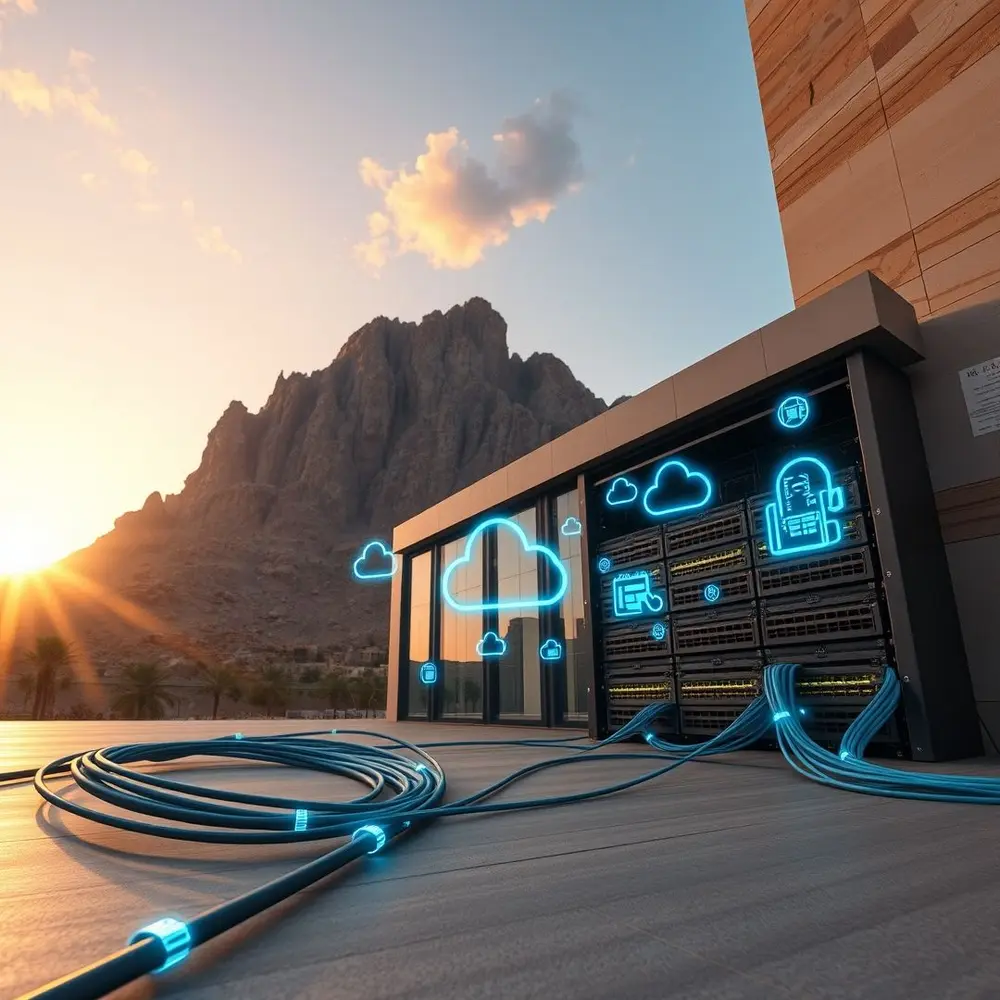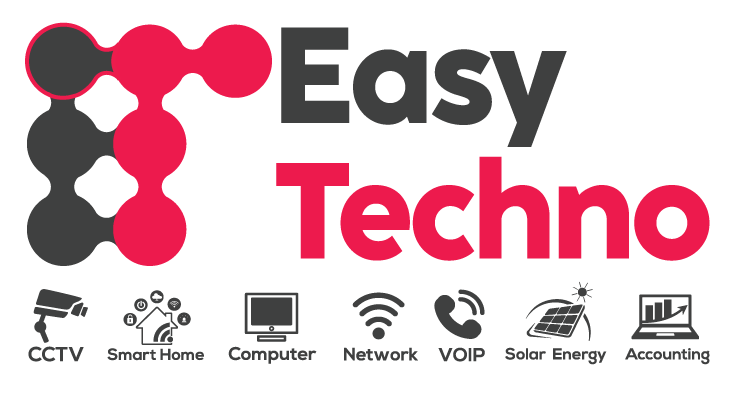How to Design a Scalable Office Network in Oman

How to Design a Scalable Office Network in Oman: A Comprehensive Guide
In the rapidly evolving business landscape of Oman, characterized by robust digital transformation initiatives and a thriving private sector, a resilient office network is no longer a luxury—it’s a critical asset. As enterprises in Muscat, Salalah, Sohar, and beyond scale operations, embrace cloud platforms, and deploy bandwidth-intensive applications, the need for a network that evolves alongside growth becomes paramount. Designing a scalable office network isn’t just about adding new devices; it’s about architecting a robust, agile infrastructure capable of handling increasing demands without performance lags, security vulnerabilities, or costly disruptions. This guide dives deep into the essential strategies, technologies, and considerations for Omani businesses aiming to build a future-proof digital backbone.
Understanding the Unique Network Needs of Omani Businesses
Oman’s dynamic market presents distinct challenges and opportunities. The country’s strategic push towards Oman Vision 2040 emphasizes technological advancement. Businesses face factors like geographic dispersion between major cities and industrial zones, digital transformation mandates, security threats, and the drive for operational excellence. A scalable network is the linchpin supporting VoIP communications, seamless collaboration tools like Microsoft Teams, access to cloud solutions provider platforms, and modern IoT deployments. Ignoring scalability can lead to crippling bottlenecks as organizations expand staff, integrate new branches, or adopt data-heavy technologies, hindering competitiveness.
Scalability in the Omani context must also account for local internet service provider (ISP) options, telecom regulations overseen by the Telecommunications Regulatory Authority (TRA), and environmental factors like heat and humidity potentially affecting hardware longevity. Designing a truly scalable network requires a holistic view of Oman’s specific operational environment.
Strategic Planning: Assessing Current Needs & Future Growth Projections
The foundation of any scalable network design is rigorous strategic planning. Begin with a thorough audit of your existing infrastructure: catalog all devices (routers, switches, firewalls, servers, workstations), map the current topology (physical and logical), measure performance metrics (bandwidth utilization, latency), and identify existing bottlenecks. Simultaneously, engage key stakeholders across departments—IT, operations, finance, leadership—to understand business objectives for the next 3-5 years.
Key questions to ask include: How many employees will we add? Are new branches planned? Will we adopt unified communications, video surveillance, or industrial IoT? Is cloud migration expanding? What new applications are anticipated? Quantifying growth projections allows for intelligent capacity planning. Overestimating ensures headroom, while underestimating leads to premature obsolescence. Factor in Oman’s specific growth trajectory, which often requires robust connectivity for projects linked to diversification away from oil.
Core Principles for Scalable Network Architecture Design
A scalable network design adheres to fundamental architectural principles:
- Hierarchical Design (Core-Distribution-Access): This layered approach segments functions. The core layer ensures high-speed backbone traffic, the distribution layer manages policies and routing between segments, and the access layer connects end devices. This modularity isolates issues and facilitates easy upgrades, ideal for Oman’s fast-growing enterprises.
- High Availability & Redundancy (HA): Minimizing downtime is critical. Employ redundant paths, dual power supplies, dual firewall clusters (using VRRP/HSRP protocols), and UPS backup for critical network points. Consider diverse fiber uplinks from different Omani ISPs for external connectivity.
- Segmentation: Divide the network logically (VLANs) and physically (DMZ for public-facing servers) to enhance security, control broadcast domains, and prioritize traffic. This becomes crucial as the network grows beyond a simple setup.
- Robust Addressing Scheme: Use a well-structured IP subnetting scheme (e.g., RFC 1918 private ranges) that allows for significant expansion without conflicts, simplifying management across locations.
Employing enterprise-grade, modular switches and routers is non-negotiable. Investing in reliable hardware upfront avoids performance caps. Partnering with a provider specializing in enterprise-grade network consulting services in Oman ensures you select equipment meeting current and future needs.
Implementing Future-Proof Network Infrastructure
Transforming design into reality requires careful selection and deployment:
- Cabling Infrastructure: Deploy structured cabling (Cat 6A/Cat7 or fiber) certified for performance. Conduits should allow easy additions. Proper labeling and documentation are vital for manageability as the network expands, especially within Oman’s complex commercial buildings.
- Switching Strategy: Use managed layer 2/3 switches centrally in the distribution/core with sufficient stacking or 10Gbps/25Gbps uplinks. PoE++ switches efficiently power VoIP phones, wireless access points (APs), and security cameras.
- Router Selection & WAN Connectivity: Utilize powerful routers supporting multiple routing protocols (OSPF, BGP for larger networks) and diverse WAN options (dedicated fiber, robust business broadband, SD-WAN, secure VPN tunnels for Omani branch links). SD-WAN, in particular, offers agility, allowing dynamic path selection and central management crucial for scalability.
- High-Density Wi-Fi Architecture: Design a CAPWAP-based solution with centralized wireless LAN controllers (WLCs) and strategically placed, high-density access points (APs) supporting Wi-Fi 6 or Wi-Fi 6E. Plan for seamless roaming and capacity growth within Omani office layouts, using predictive site surveys.
Engaging a professional IT infrastructure solutions partner is invaluable at this stage. They bring expertise in sourcing compliant hardware, navigating local supplier options effectively, and ensuring configuration best practices.
Network Security: The Indispensable Layer
Scalability cannot compromise security. A larger network surface inherently increases risk exposure:
- Next-Generation Firewalls (NGFWs): Essential at the network perimeter (internet edge) and between critical internal segments. They provide deep packet inspection (DPI), application control, intrusion prevention (IPS/IDS), and VPN termination.
- Advanced Threat Protection (ATP): Integrate sandboxing and threat intelligence feeds to proactively detect and mitigate sophisticated malware targeting businesses globally, including within Oman.
- Network Access Control (NAC): Enforces security policies before devices connect (wired or wireless). Authenticates users, verifies device health (patch level, AV status), applies role-based access control (RBAC), and segments guest access. Vital as BYOD grows.
- Distributed Security (Micro-Segmentation): Extend security deeper within the network, especially in the data center or cloud, regulating traffic between workloads even on the same segment.
- Centralized Security Management: Use a Security Information and Event Management (SIEM) or dedicated management console (like FortiManager) for logging, monitoring, correlation of events, and unified policy enforcement across an expanding infrastructure operating under Omani cyber regulations.
Securing a scalable network demands continuous vigilance. Strategies like zero-trust network access (ZTNA) are becoming increasingly important. Partnering with specialists in enterprise network security ensures your foundation remains resilient against evolving threats on a larger scale.
The Power of Cloud Integration in Scalable Networks
Cloud services like Microsoft Azure or AWS ME are fundamental to modern, scalable Omani IT strategies. Network design must seamlessly integrate hybrid and multi-cloud environments:
- Direct Cloud Connectivity: Utilize dedicated links (like AWS Direct Connect, Azure ExpressRoute) via local providers for predictable performance and lower latency than the public internet.
- SD-WAN Optimization: Intelligently route cloud application traffic over the most efficient path (MPLS, broadband, LTE backup), enhancing SaaS application performance.
- Cloud Security Extensions: Ensure cloud-bound traffic traverses NGFW inspection points (Cloud-Security Gateways – CSGs, or cloud-delivered Secure Web Gateways – SWGs) before reaching SaaS platforms or IaaS instances.
- Hybrid Network Management: Employ tools providing unified visibility and control over both on-premises network components and cloud resources.
A well-integrated cloud strategy provides inherent flexibility crucial for Oman’s evolving business needs. It allows for quick scaling of compute and storage resources hosted locally or regionally without constant physical infrastructure overhaul.
Network Management, Monitoring & Automation for Efficiency at Scale
Managing a sprawling network manually becomes unsustainable. Implement robust tools:
- Network Monitoring & Analysis: Platforms offering real-time visibility into performance (bandwidth, device health, latency, bottlenecks), configuration compliance, and security alerts are essential. Historical data aids capacity planning.
- Configuration Management: Use tools to standardize device configurations, push updates uniformly, and ensure backups across the entire infrastructure – critical when managing growth across multiple locations.
- Embracing Automation: Automate routine tasks like provisioning, monitoring checks, basic troubleshooting steps, access control policy updates, usage reporting for Omani telecom billing, and security patch deployment. This frees IT staff for strategic initiatives.
- Proactive Maintenance Schedule: Establish scheduled hardware health checks, preventive component replacements based on lifecycle, and regular software/firmware updates.
Proper documentation—network diagrams, IP address management (IPAM) databases, vendor contacts, maintenance logs—is non-negotiable for troubleshooting and training new IT personnel as the organization scales.
Choosing Reliable Vendors and Service Providers in Oman
Your building partners matter significantly:
- Local Telecom Providers: Evaluate ISPs (e.g., Omantel, Ooredoo) not just on price but on reliability, service level agreements (SLAs), business support quality, and the suitability of their offerings (fiber, broadband, MPLS, dedicated access) for your current and future needs across various Omani locations.
- Hardware & Software Vendors: Select reputable vendors offering scalable, certified equipment with strong local support channels and warranty services. Consider long-term acquisition costs.
- Experience Matters: Seek experienced, certified network integrators and consultants with proven expertise and a deep understanding of designing scalable networks within Oman’s constraints and regulatory environment. Firms offering comprehensive network consulting can provide invaluable foresight into technologies and designs that will serve you beyond the immediate future.
Look for partners who offer ongoing managed services—24/7/365 monitoring, proactive maintenance, tiered support options—ensuring your scalable network remains reliable.
The Strategic Advantage: Partnering with Experts like easytechno
Designing and implementing a truly scalable office network, capable of powering Oman’s ambitious business growth and navigating regional challenges, is a complex, resource-intensive endeavor. Mistakes in the initial design phase or implementation can lead to costly breakdowns and hinder future expansion. Partnering with seasoned network design specialists like easytechno offers numerous advantages:
- Local Expertise: Deep understanding of Oman’s infrastructure challenges, ISP landscape, regulatory environment, and best practices applicable to diverse Omani industries.
- Holistic Planning: Ensuring network design aligns flawlessly with your specific business objectives and projected growth, foreseeing needs before they become bottlenecks.
- Architectural Best Practices: Implementing robust, proven scalable architectures using cutting-edge, enterprise-grade technologies.
- Vendor Selection & Management: Navigating hardware/software options, negotiating with local and international vendors, ensuring optimal procurement and interoperability.
- Efficient Implementation: Flawless deployment minimizing business disruption, with comprehensive documentation.
- Ongoing Managed Services: Providing continuous optimization, security hardening, proactive maintenance, and scalable support to adapt the network seamlessly as your organization evolves.
By leveraging the comprehensive capabilities of an IT solutions provider with a strong presence like easytechno, Omani businesses gain not just a network, but a strategic asset. It ensures seamless operation today while providing the robust, adaptable foundation necessary for tomorrow’s opportunities.
Conclusion: Building the Future-Proof Foundation for Omani Business Growth
Designing a scalable office network is a strategic investment critical for success in Oman’s competitive and digitally driven economy. It requires careful planning that anticipates future growth, hinges on robust core architectural principles (hierarchical design, redundancy, segmentation), integrates modern cloud strategies, and prioritizes robust security throughout. The process demands meticulous attention to infrastructure implementation, management automation, and partnering with experienced Omani service providers and experts.
Businesses that prioritize scalable network design position themselves to capitalize on opportunities—whether through adding new branches, embracing hybrid work models, deploying innovative technologies, or enhancing customer experiences. They avoid the pitfalls of constrained networks, fostering agility and resilience. Partnering with experts such as easytechno transforms this complex undertaking into a manageable process, providing the necessary expertise, solutions, and ongoing support. A scalable network isn’t just about connecting devices; it’s about empowering sustainable growth and unlocking the full potential of your Omani enterprise.
Take the strategic first step towards securing your organization’s digital future today. Explore how tailored enterprise solutions from professional IT consultants at easytechno can help you architect, build, and manage a network that scales seamlessly with your ambition.
